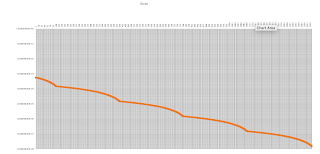"something that really is remarkable that
happened in last few weeks there was
papers that were published they were
able to remeasure the radius of the
proton more precisely using standard
standard techniques that is using
electrons instead of muons one
remaining criticism on my prediction of
the radius the proton which is critical
was that oh well this new radius of the
proton which is 4 percent smaller than
is predicted by QED by the standard
model is maybe wrong although it was
verified twice 2010 and 2013 and it
produced what's called a proton puzzle
the proton radius puzzle you know there
was a lot of you know literature saying
well maybe because they use muons which
are every electrons they flex the proton
radius you know the the the elasticity
of the proton radius kind of pushed and
when the when the electron was scattered
off it and that's why a smaller radius
and all this stuff trying to avoid the
problem because if the radius is 4
percent smaller all of a sudden all of
standard the standard model QED just
goes out the window
because it's highly reliant on that
radius being specifically what used to
be and so in the last few weeks
published papers were reporting on
experiments that were done where they
use normal electrons they use the the
earlier techniques but more precisely
and they got the same radius they got
the radius that they got from the view
on experiment the radius that my
equations predict so that means that and
it's funny
because the standard like this there's
actually articles in the press out there
saying Oh physics is not broken after
all we got the wig we got we confirmed
that the radius was the new onyx radius
well actually that's wrong
yeah and this physicists out there
they're little confused because the fact
that we predict that these these that
they confirmed this radius having been
four percent smaller totally breaks
physics I mean the standard model of
physics the universe is doing just fine
but the standard model of physics broken
QEDS in big trouble because the
Rydberg constant which is very
precisely measured as well and the
radius of proton now being four percent
smaller precisely measured there doesn't
work inside the QED theory that is you
know the QED theory actually used the
proton radius as as a variable to adjust
to the Rydberg constant and you know
it give the radius that they thought it
was now if it's four percent smaller all
of a sudden the Rydberg constant goes
up in smoke which was thought to be you
know the most precise prediction of any
theory you know on the planet ever well
all of a sudden it's it's wrong by a
long shot you know because it was
precise to like some 12 or 10 digit
accuracy but if it's four percent wrong
now it's not precise at all and so and
so the only theory that actually gives
the correct Rydberg constant and radius
of the proton and its mass and the mass
of the universe of course and the mass
you know without the need for dark
matter and dark energy and the mass of
all the electrons the only theory that
actually does the job
is the holographic math solution and
that's why it gives the correct
prediction for the radius the protons
that's a really good"





